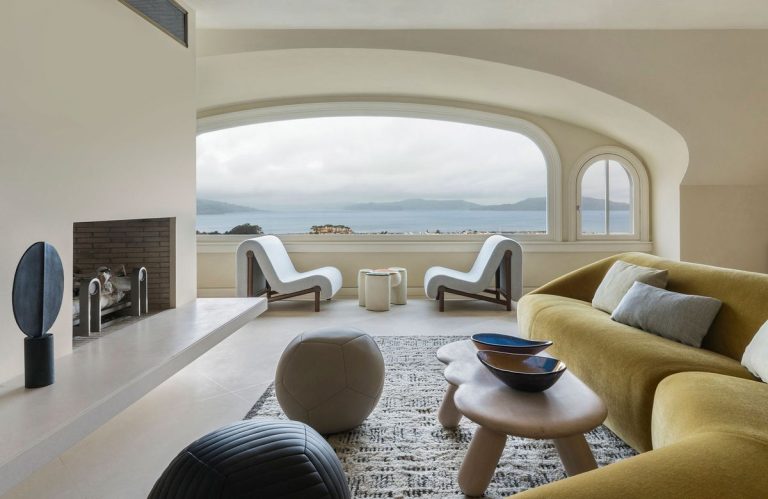Minimalist schemes are a great expression of simplicity in technique, color and balance, but they can also be limited to the cold side of interior design. Minimalism avoids excess in favor of beautiful functionality, but it doesn't have to be without comfort.
Interior designers use a variety of techniques to incorporate the best elements of minimalism into their designs while still maintaining the warmth and welcoming feel of cozier interiors, such as dark wall colors that soften the bleak feel of furniture, and natural materials like wood and wool that add texture to sleek, sophisticated interiors.
To get the best of both worlds, we asked designers how they blend minimalism and comfort in interior design. They all offer up some heavy inspiration for your next project, asking you to think about how each element in a room affects the overall scheme. From maximizing natural light in every nook and cranny to finding the perfect rug, they all ask you to think of comfort and minimalism as allies, not enemies.
1. Look to the dark side
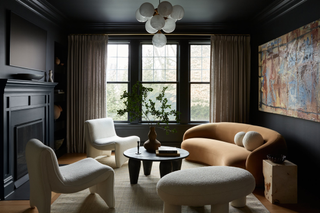
(Image courtesy of Far Studio)
Challenging the notion that all minimalist spaces are bathed in crystal clear white, this decadent minimalist living room from Far Studio's Fairview project showcases the alluring nature of the inky deep hue. The minimalist shapes of the sofa and armchairs create a soft contrast and become the focal point of the space.
“We love using dark, rich, saturated colors to add warmth to a space,” says Brittany Hakimfar, principal designer at Far Studio. “In this home, we wanted to create an atmospheric space where people could hang out with friends, enjoy a cocktail, or just sit on the couch and read a book. The black of the walls, ceiling, and trim combined with the light-colored abstract paintings, cream bouclé furniture, and ochre velvet sofa is the perfect combination to create a very warm and inviting space.”
Dark walls not only draw attention to the furniture, but also create a cocoon-like effect, emphasizing comfort.
2. Use wood accents
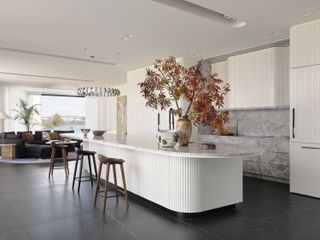
(Image courtesy of Greg Natale)
It's important not to forget the crucial role your choice of accents plays in defining the ambience of your interior, as this spacious, contemporary, open-plan kitchen design by Greg Natale proves. The modernity and minimalism of the floor and kitchen is softened further by wood accents, with the designer himself advocating the effectiveness of trustworthy natural materials.
“Wood accents can bring warmth to a modern space without taking away from the minimalist aspects of the design,” reveals interior designer Greg Natale. “In a home we recently completed in Hunters Hill, Sydney, the clients wanted a minimalist, modern home that mimicked open-plan, apartment-style living. The foundation of the home was very modern with black marble floors and white walls, creating a clean, gallery-like feel, and we layered wood accents in the décor and furniture to create a sense of warmth and comfort.”
The warmth of wood pairs extremely well with cooler colours in kitchens and floors, so consider the interplay of colours and materials when designing a minimalist space with balance in mind.
3. Consider your lighting plan
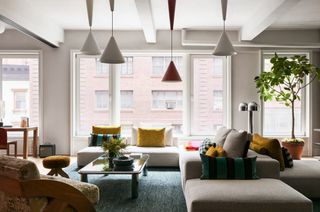
(Image courtesy of MKCA)
Lighting is both an art and a science, and it plays a vital role in how comfortable we feel. Softer lighting temperatures are easier on the eyes, but our spaces, like us, are constantly evolving, so it's important that even a minimalist lighting plan can adapt to your needs, no matter how minimal your interior.
This modern loft interior designed by New York-based studio MKCA shows how minimal lighting can illuminate in both form and function. “We all know that lighting is key to making a space more comfortable and functional,” says Michael K. Chen, co-founder and board president of MKCA. “Generally speaking, it's important to mix and match lighting types to suit the situation. We combine general architectural and decorative lighting, and try to avoid overhead lighting whenever possible. We've found that spaces with a particular architectural perspective, whether the design language is minimal or expressive, can pose lighting challenges. This is precisely when it helps to be creative and flexible in your approach. In this project (NoMad), we combined a cluster of height-adjustable pendant lights by Achille Castiglioni with very subtle track lighting and floor lamps to create a diversified lighting landscape.”
Michael emphasizes that each lighting serves a different need and, as a result, enhances the comfort of the room depending on its specific use. “The track lighting is used when general lighting is needed, while the decorative lighting is enough to illuminate common tasks such as reading, lounging and watching TV,” says the designer. “The pendants helped to break up the strong grid of the concrete building structure above, so where the track lighting follows the grid, the pendants do not. They follow the furniture arrangement and illuminate the sofa and seating below, not the whole room. The floor lamps are important here, as they are in many cases, especially since the room has a sofa that can be used from all directions and there are no end tables for table lamps. But here, the floor lamps also address the space between the pendants and where people sit, which is important for visual comfort and nighttime mood.”
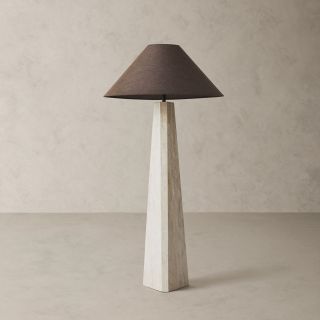

Zoe Modern Minimalist Table Lamp Oil Rubbed Bronze
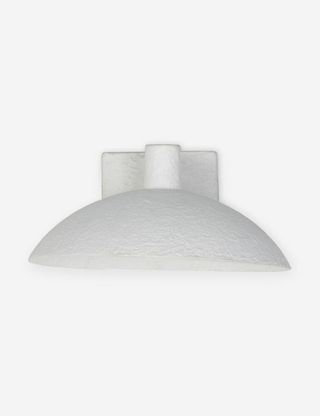
4. Surround your space with white oak
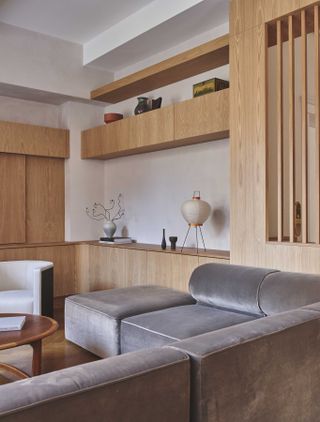
(Images by Adrian Gaut, Styling by Colin King, Interior Architecture & Design by Studio Zung)
Oak is a time-honored material that not only appeals to minimalist sensibilities, but also evokes natural warmth and nostalgia. This sentiment is perfectly expressed in Studio Zung's Maison Duane project, with its sophisticated, minimalist aesthetic. The subtle grey blends beautifully with the warmth of white oak to create a contemporary, yet inviting space.
“We believe that the places we call home should evoke feelings of both serenity and energy, creating environments where we can intentionally balance life while staying inspired. Our approach is to infuse subtle warmth and serenity into every design detail, such as the Venetian Marmarino walls that bring organic texture and an enveloping sense of coziness to each room,” says Tommy Zung, founder and principal of Studio Zung. Continuity also plays a role in comfort here, as the designer explains. “At Maison Duan, European white oak accents that run seamlessly from the entryway to the living room's custom Studio Zung cabinetry act as foundational elements that unify the spaces. Accentuated by the beautiful curves of this Romanesque Revival pre-war building, the wood, bathed in natural light, infuses a timeless elegance and quiet energy that resonates throughout the home,” Tommy adds.
5. Soften your interior with curves
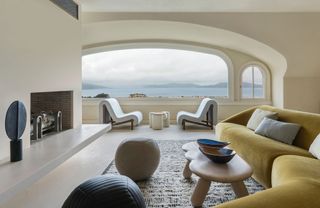
(Image courtesy of David Duncan Livingston; design by Heather Hilliard Design)
When you think of minimalism, you might think of sharp angles and straight lines. These angles create visual symmetry, while softer shapes and textures create balance in your decor and make it feel homey and comfortable. “Softly textured fabrics and rugs work best in spaces with simpler furnishings, and organic, rounded shapes also feel more inviting than sharp 90-degree corners,” says San Francisco designer Heather Hilliard.
The studio's San Francisco project combines soft, bulging shapes with distinctive armchairs, coffee tables and sofas. The curved window arcs, these shapes and the use of soft, textured upholstery create a cozy atmosphere in a grand space. When designing your interiors, don't forget to consider how you can make the most of the architectural features of the space to create a minimalist, inviting space.
6. Create a cozy corner
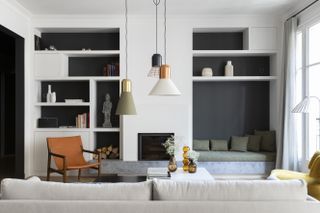
(Image courtesy of Pauline Le Goff; design by Camille Hermand Architectures)
When it comes to making the most of a minimalist interior, the comfort of a reading corner can't be underestimated. This example by French studio Camille Hermand Architectures keeps the design minimal with straight lines and a cool color palette. The nook is complemented by a modern shelf placed next to the fireplace, which coordinates with the rest of the design.
“When you want to create harmony around a contemporary fireplace, a bench seat is perfect. It creates a cozy corner that ties the fireplace together with the rest of the space. The horizontal lines it creates are soothing. All you need is a mattress and cushions to create a cozy, warm space,” says Parisian designer Camille Hermand. To maintain harmony with the rest of your minimalist decor, choose upholstery and cushions that feel connected to the overall design.
7. Light a fire to add warmth
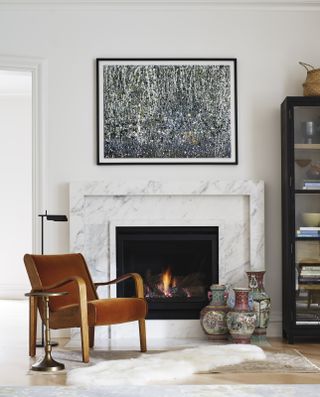
(Image courtesy of Form + Field)
Fireplaces often evoke images of coziness. We're drawn to their warmth and crackling embers. Fireplaces are often thought of as a staple of traditional, rather than contemporary, interiors, but this couldn't be further from the truth. This example from San Francisco studio Form + Field's Atherton Estate project shows how a fireplace can shed a cozy lens on a traditionally minimalist material like marble. “In this project, we modernized the fireplace with a custom marble mantel and surround. The cozy texture of the mohair from the vintage chairs, the sheepskin rug, warm woods, and an eclectic mix of the client's artwork and traditional vases make the room feel very comfortable and lived-in,” says Christine Lin, principal at Form + Field.
8. Details matter: don't forget the rug
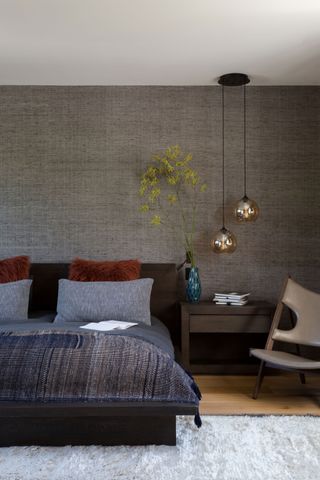
(Image courtesy of Amy Bartlam, design by Kim Gordon Designs)
Minimalism may take a more sophisticated approach to interiors, but the details of a space still need to be considered. Rugs, in particular, are often the last thing we think about when designing a space, but they play a big role in bringing comfort to a space. Rugs with a gentle texture on the surface soften minimalist interiors. Venice-based interior designer Kim Gordon takes this approach at Pier Project. The off-white rug adds lightness to this contemporary bedroom with its clean lines and sophisticated brown palette. The designer shares her thoughts on making a minimalist home even more comfortable. “A minimalist home means attention to every little space as well as moment. That level of detail needs to tickle all the senses. Investing in a smart home system that lets you set the mood, lighting, and smell is just as important as an organized, edited, and simple floor plan. A nice rug in neutral tones helps define a space and add a cozy softness,” says Kim Gordon.

